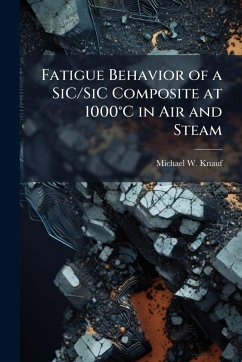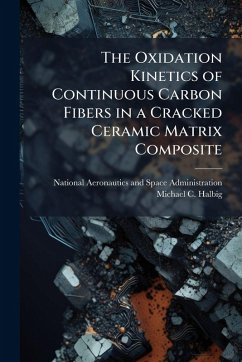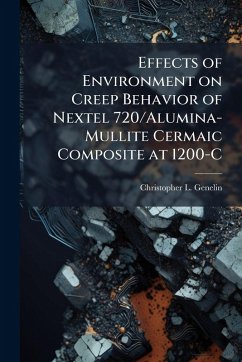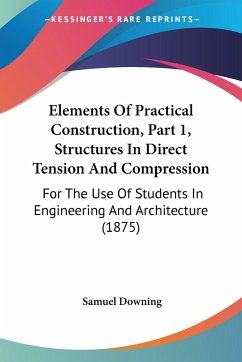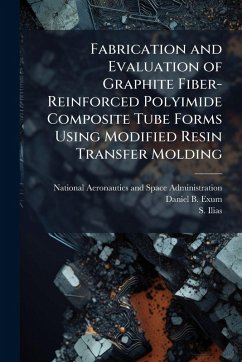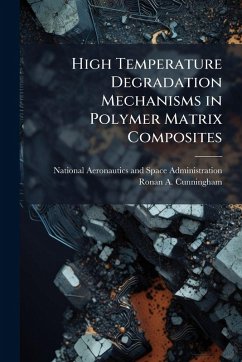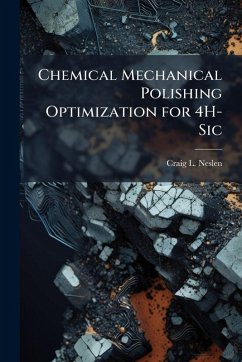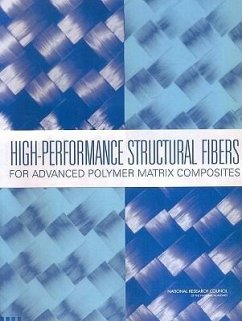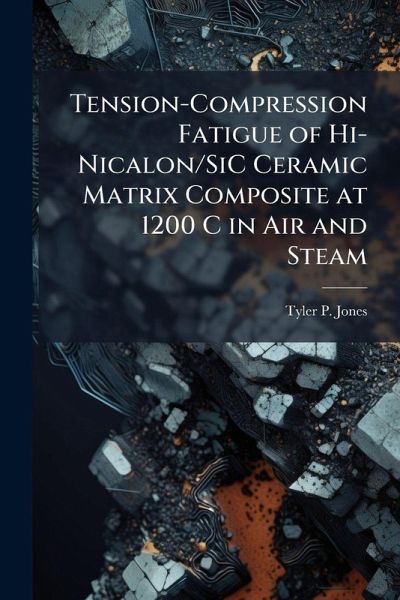
Tension-Compression Fatigue of Hi-Nicalon/SiC Ceramic Matrix Composite at 1200 C in Air and Steam

PAYBACK Punkte
9 °P sammeln!
The tension-compression fatigue of a Hi-Nicalon /Silicon Carbide ceramic matrix composite (CMC) was studied at 1200°C in laboratory air and in steam environment. The CMC investigated in this effort consisted of an oxidation inhibited HyprSiC matrix reinforced with laminated woven Hi-Nicalon fibers. Fiber preforms had pyrolytic carbon fiber coating with boron carbide overlay applied were then densified with the HyprSiC oxidation inhibited matrix through chemical vapor infiltration (CVI). The tensile stressstrain behavior was evaluated and the tensile properties measured at 1200°C. Tension...
The tension-compression fatigue of a Hi-Nicalon /Silicon Carbide ceramic matrix composite (CMC) was studied at 1200°C in laboratory air and in steam environment. The CMC investigated in this effort consisted of an oxidation inhibited HyprSiC matrix reinforced with laminated woven Hi-Nicalon fibers. Fiber preforms had pyrolytic carbon fiber coating with boron carbide overlay applied were then densified with the HyprSiC oxidation inhibited matrix through chemical vapor infiltration (CVI). The tensile stressstrain behavior was evaluated and the tensile properties measured at 1200°C. Tension-compression fatigue tests were conducted at a frequency of 1.0 Hz with a ratio of minimum stress to maximum stress of R = -1.0. Tension-compression fatigue behavior was studied for fatigue stresses ranging from 80 to 300 MPa in air and in steam. Fatigue run-out was defined as 2x10⠵ cycles. Fatigue limit (based on a run-out condition of 2x10⠵ cycles) was 80 MPa in air and in steam. The presence of steam decreased the fatigue life of specimens tested above the fatigue limit. Specimens that achieved fatigue run-out were subjected to tensile tests to failure to characterize the retained tensile properties. The material retained 100% of its tensile strength. Reduction in tensile modulus was 68% while the change in compressive modulus was negligible. This work has been selected by scholars as being culturally important, and is part of the knowledge base of civilization as we know it. This work was reproduced from the original artifact, and remains as true to the original work as possible. Therefore, you will see the original copyright references, library stamps (as most of these works have been housed in our most important libraries around the world), and other notations in the work. This work is in the public domain in the United States of America, and possibly other nations. Within the United States, you may freely copy and distribute this work, as no entity (individual or corporate) has a copyright on the body of the work. As a reproduction of a historical artifact, this work may contain missing or blurred pages, poor pictures, errant marks, etc. Scholars believe, and we concur, that this work is important enough to be preserved, reproduced, and made generally available to the public. We appreciate your support of the preservation process, and thank you for being an important part of keeping this knowledge alive and relevant.



